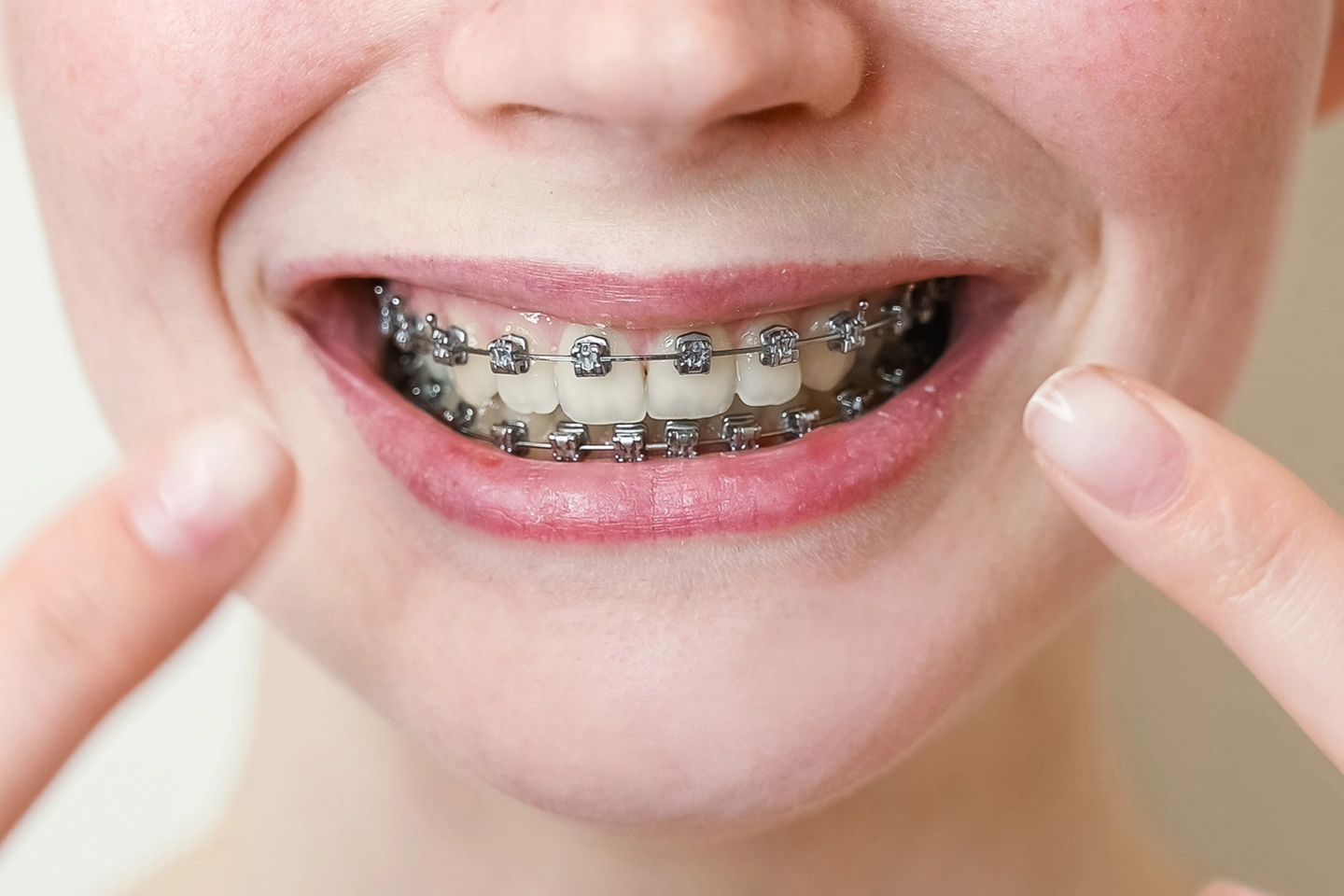Do You Have White Spots on Your Teeth after Braces?
Jul 21, 2016

Braces are an excellent solution for achieving a straighter, healthier smile, but sometimes, they leave behind an unexpected cosmetic issue: white spots on your teeth. These spots can be concerning, especially after putting in months or even years of orthodontic care. But don’t worry, these white marks are more common than you think and are treatable with the right approach.
If you’ve noticed these chalky, opaque patches on your teeth after your braces came off, you might be dealing with white spot lesions from braces. This blog will explain what causes them, how to prevent them, and the best treatments available. Whether you're currently undergoing orthodontic treatment or have already finished, this guide will help you understand how to maintain a brilliant, spot-free smile.
What exactly are these white spots? How did I get them?
White spot lesions are clinically referred to as decalcification or demineralization. They are porosities under the surface of the tooth produced by dental plaque. These undesirable white, chalky marks appear when the acids produced by plaque remove the minerals from the tooth surface and alter the way it reflects light, making it appear opaque.
These white spots are not just cosmetic; they're an early sign of enamel breakdown and potential tooth decay. Braces can increase the risk of these spots by making it harder to clean around brackets and wires, which leads to more plaque buildup. That plaque produces acids that attack your enamel. The longer it stays on your teeth, the higher the risk of developing white spots. Dental cleanings: what you should do for healthy gums is not just about keeping your gums healthy; it also helps prevent issues like white spots by removing plaque in areas that are tough to reach with regular brushing and flossing, especially around orthodontic appliances. These white spots are not just cosmetic; they're an early sign of enamel breakdown and potential tooth decay. Braces can increase the risk of these spots by making it harder to clean around brackets and wires, which leads to more plaque buildup. That plaque produces acids that attack your enamel. The longer it stays on your teeth, the higher the risk of developing white spots. Dental cleanings for healthy gums are not just about keeping them healthy; it also help prevent issues like white spots by removing plaque in areas that are tough to reach with regular brushing and flossing, especially around orthodontic appliances.
In other words, white spots on teeth after braces are often caused by poor oral hygiene during orthodontic treatment. If you're wondering, are white spots on teeth permanent?. Early intervention and guidance from your dentist can help minimize or even reverse their appearance.
Can White Spot Lesions Be Prevented?
Yes, white spots are completely avoidable. Learning how to fix white spots on teeth begins with understanding how they develop and maintaining a consistent oral hygiene routine throughout your orthodontic treatment. Below are three key treatment options and prevention techniques to help you effectively avoid and address white spot lesions.
1) Removing Plaque
Plaque removal is the ONLY sure way to prevent white spot lesions. You can reduce plaque buildup by brushing and flossing regularly and avoiding foods with high acidic content.
- Brush your teeth after every meal using a fluoride toothpaste.
- Use interdental brushes or floss threaders to clean between braces and under wires.
- Rinse with a fluoride mouthwash daily to strengthen your enamel.
Maintaining excellent oral hygiene is your best defence. If you’re undergoing orthodontic treatment, be especially diligent about brushing and flossing around brackets to reduce the risk of white spots on teeth after braces.
2) Hardening The Enamel Surface
While plaque removal is the most effective way to avoid white spots, dentists also use fluoride pastes to harden the enamel surface. This, in theory, will make the teeth strong enough to resist the acids.
Topical fluoride applications can reinforce enamel against future acid erosion. Your orthodontist or dentist may recommend fluoride varnishes or gels as part of your regular dental checkups. This added layer of protection can significantly decrease your chances of developing white spot lesions from braces.
3) Protecting The Enamel With A Coating
Dentists are also using sealants to help patients avoid white spots, especially for those with braces. However, while sealants and fluoride treatments can offer added protection, they are not nearly as effective as following the Effective Ways to Brush Your Teeth with Braces, which include brushing thoroughly after every meal, using a soft-bristled toothbrush at a 45-degree angle, and making sure to clean around brackets and wires carefully. Flossing daily and maintaining a balanced diet are also essential to prevent plaque buildup and keep your smile healthy.
Sealants can serve as a temporary barrier against acid attacks, but they should always complement, not replace, good oral hygiene. Avoid sugary snacks and acidic beverages, which contribute to enamel demineralization.
Can I Fix The White Spots After My Braces Are Removed?
All white spots improve somewhat over time; minor ones may disappear without intervention. In fact, dentists advise against applying extra fluoride during the first six months because it can seal the tooth's surface and prevent remineralization below the surface. If progress is no longer evident after six months, a low-concentration, over-the-counter fluoride rinse or remineralization paste can be applied.
Additionally, your dentist may recommend specialized toothpaste containing calcium phosphate to encourage enamel repair. Patience and consistency in your oral hygiene routine can help naturally diminish the appearance of white spots. When evaluating how to get rid of white spots on teeth, always consult with your dental provider to determine the severity and the best treatment path for your unique case.
I Want It Fixed Now. Can’t I Just Do A Teeth Whitening Treatment?
Absolutely! Whitening has been shown to lighten the enamel surrounding white spots and open the “pores,” allowing them to heal. Immediately, the white spots will blend in better, and they will improve over time as the bleaching wears off. However, whitening is best used when teeth are otherwise healthy. If you still have active demineralization, whitening may worsen the spots by highlighting the uneven coloration. It's important to work with your dentist to assess whether you’re a good candidate.
For more severe white spots, your dentist may suggest one of the following:
- Microabrasion
This procedure removes superficial white spots using a combination of mild acid and abrasive agents. It is ideal for shallow lesions and produces immediate cosmetic improvement.
- Cosmetic Bonding
Composite resin can be applied to cover and blend white spots. This option works well if the lesions are more extensive or are located in visible areas of your smile.
- Porcelain Veneers
In cases where white spots are deeply set or widespread, porcelain veneers offer a permanent aesthetic solution. Veneers cover the front surface of the teeth and provide a uniform, natural look.
If you’re interested in treating white spots after braces removal, one of these procedures might be right for you, depending on the severity and your cosmetic goals. Contact our office today to schedule your consultation to discuss your options.
Final Thoughts
While white spot lesions from braces can be frustrating, they are both preventable and treatable with the help of the latest dental technology. Maintaining a healthy, beautiful smile involves more than just completing orthodontic treatment; it requires practising excellent oral hygiene, seeking preventive care throughout the process, and selecting the right post-braces solutions to address issues like white marks after braces treatment, using advanced techniques and tools.
Schaumburg Dental Studio proudly serves patients in Schaumburg, IL and surrounding areas. Whether you're managing post-braces concerns or looking for expert cosmetic care, our experienced team is here to help. Whether you're looking to treat white spots on your teeth or explore options to enhance your smile, our skilled team offers personalised solutions to restore your confidence. From subtle touch-ups to advanced aesthetic treatments, we’re here to help you shine. To learn more about your options, visit Cosmetic Dentistry: Procedures and How You'll Love Your Smile for a closer look at possible transformations.

Contact Us
Our team is happy to hear from you! Fill Out Our Simple Form to Schedule Your Next Visit and Experience Exceptional Dental Care in Schaumburg.
Email: office@sdsdentist.com
Phone: (847) 882-3333
Monday: Closed
Tuesday – Thursday: 9:00 am to 6:00 pm
Friday: 8:00 am to 4:00 pm
Saturday: 8:00 am to 2:00 pm
Sunday: Closed
We offer comprehensive dental services for all ages. Trust Us as Your Go-To Family Dentist.






